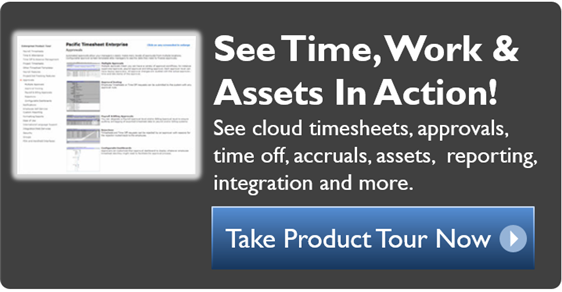
The Basics: What is a Payroll Manager?
It seems simple enough. A payroll manager is the person in charge of maintaining a company’s payroll system and ensuring that all employees get the proper amount of pay and leave time. However, payroll management is not so easy. Depending on your company, there can be great complexity in the calculation of leave and other benefits, or the administration of overtime and work rules. All of this must be done, sometimes in rapidly, so that a payroll is distributed to employees accurately and on time. If payrolls are wrong or late there can be dire financial or legal consequences.
Being a payroll manager is often a thankless job. Your primary responsibility is to make sure things don't go wrong. No one pats you on the back when things go right. Finally, you must remain vigilent monitoring changing work, benefit and labor rules to make sure your employees are being paid properly, and that no one can come back later and sue your company with the claim of being shortchanged on a paycheck.
The duties of a payroll manager seem straightforward enough. But there are nuances that create challenges.
1. Collecting Employee Information and Timesheets
To properly and accurately calculate and distribute an employee’s earnings, payroll managers must first obtain and store the necessary employee information. This information includes but is not limited to an employee’s legal name, address, Social Security number, and bank account routing numbers. Payroll managers are also responsible for getting the requisite employment forms, such as a W-4, signed to indicate an employee’s exemptions for tax withholdings. Incorrectly obtained forms can lead to errors in employee payroll tax withholdings which will then need to be corrected later at great time and expense.
2. Administering Payroll
The second batch of information needed to administer payroll is time. Payroll managers are in charge of what can sometimes be an elaborate and time-consuming process of collecting employee timesheets, punch cards, and any other form of work and leave time tracking. This is done on a defined periodic basis, such as weekly, biweely, semi-monthly or monthly, and requires signatures and approvals at several levels to make sure data is correct. Finally, this hours data is entered into company payroll and accounting systems.
3. Leave Accruals
All companies provide their employees leave benefits such as vacation time, personal leave, sick days or types of paid leave. However, depending upon company leave policies and rules, the way leave benefits are accrued by an employee over time can be quite complex. For example, some companies can have simple grants of vacation time that accrue on an employee's anniversary or hire date each year. In addition, there are usually "years of service rules" that give employees more days off the longer they work for a company. For a company with hundreds or thousands of employees, manually calculating accruals and maintaining leave balances can require significant effort.
4. Calculating Payroll Taxes
Calculating employee and employer payroll taxes may be one of the most complicated payroll management duties. Most payroll systems should calculate federal, state, local, Social Security, and Medicare withholdings based on marital status and claimed exemptions. But as you would expect, payroll tax law is constantly changing. Payroll managers often need to work with tax specialists and attorneys to make sure the company remains compliant, particularly when new laws seem difficult to interpret.
5. Communicating with Co-Workers
A large part of a payroll manager’s job is maintaining open communications with all company employees, regardless of level or seniority. An effective payroll manager will engage with other employees, both to verify attendance and hours worked and to explain more complex policies like health insurance deductions and sick leave. Often employees, concerned about their pay and leave benefits, will have questions about their paychecks or leave accruals. Payroll managers have to ensure that their staff responds to employee information requests quickly and efficiently. If not, possible errors can remain uncorrected for too long.

The Challenges of Managing Payroll
As you can see, a payroll manager's job has many moving parts all while keeping up to date on changes in tax and employment law and regulations. Payroll managers have a long list of tasks that have to be performed within extremely tight deadlines. Accordingly, payroll managers face several challenges.
1. Administrative Overwhelm
As you probably know, or experience, many companies still have payroll processes where some or all tasks are being performed manually, using paper or Excel timesheets. This can create an overwhelming administrative burden and increase the risk of errors such as incorrect payments and misapplication of employment and labor rules. You might have automated payroll and accounting systems, but your staff still has to manually enter employee hours data using data entry screens that are cumbersome and slow. While these screens might have automated validation to ensure that each entry is valid, it still takes a lot of administrative time to complete. Time off tracking often involves request forms that can get lost in desk drawers and files. Manual requests are often not approved on a timely basis and are never reconciled with the actual time off an employee takes on his timesheet. While centralizing time off request management in the payroll or human resources departments might simplify things, it doesn't get rid of the manual work.
- Solution: You can eliminate paper timesheets and forms by investing in payroll timesheet software that can capture hours data and easily integrate with all of the systems you already use. Eliminating paper timesheets will increase the efficiency of payroll and accounting systems without the need to hire additional payroll staff. If you use a good system, leave accruals can be completely automated, including years of service rules and any employee leave balance accruals such as biweekly, semi-monthly, monthly or yearly accruals. You should also be able to automate accrual rollover rules. Leave request and approval workflow can be automated with an audit trail tracking every step in the process. Smaller companies may also be interested in outsourcing payroll to a vendor who specializes in payroll management.
2. Organizational Issues
In manual payroll systems, it can be almost impossible to keep employee records and information organized in a way that allows you to accurately calculate and distribute payroll to employees. Because payroll managers are responsible for more than simply calculating earnings, like tracking leave and sick time, disorganized employee files can lead to a multitude of problems.
- Solution: This is also where good timesheet, payroll and accounting software can greatly increase accuracy and efficiency. Most software makes it easy to organize your employee and human resources information, while integrating with all of your other resource systems.
Although software can be the solution to many payroll problems, software that is incompatible with your other systems can create a whole new set of issues. If you use human resources software that cannot be integrated with your pay and benefits software, for example, it may actually add to the administrative burden on your payroll staff.
- Solution: Choose your payroll and time tracking software carefully. Good software should allow you to integrate all of your systems and platforms while reducing the amount of time spent tracking employee hours and inputting data, which in turn should make all of your payroll processes more efficient and cost-effective. Look for vendors who are willing to work with your payroll team to create a customized platform that matches your specific needs.
4. Employee Absence Tracking
Employee absence tracking is often a primary responsibility of line managers or a human resources department. Excessive sick time or unexcused absences, however, are often leading indicators of employee personal issues that might require intervention, e.g. drug or alchohol abuse, transportation, medical or family problems. Perhaps the greatest detriment to manual time tracking is the prohibitive cost of consolidating employee data together. Manual systems cannot be easily leveraged to give managers a full picture of an employees work and absence behavior. Without easy access to timely data and analysis, employee attendance problems can go unnoticed and unaddressed far longer than is prudent. In manual time tracking and payroll systems, tracking and reconciling schedules, actual attendance and work time, unscheduled absences and leave balances can be extremely difficult and labor intensive.
- Solution: Utilizing timesheet software that tracks attendance, hours worked, unscheduled and scheduled absences in one integrated system allows managers to monitor and analyze employee performance. Together they form an absence management system that allows you to get early warning of employees problems and take action, either using progressive discipline measures such as absence points or conducting interventions that might salvage a valuable employee suffering from substance abuse or health issues.
5. Compliance Issues
As a payroll or human resources manager, there are a large number of federal, state and local laws and regulations you need to be aware of when calculating and administering employee payroll, leave, and absences. And these laws are subject to constant changes. It goes without saying that when timesheet, leave management and payroll processes fail to comply with the most recent version of tax and employment laws, companies risk costly complaints, labor department investigations, law suits, and possible penalties.
- Solution: Outsourcing payroll with a reputable payroll services company makes it easier to keep up to date on the latest regulations. Payroll timesheet software can allow managers and staff to make adustments to time and leave tracking practices quickly, often with little or no re-training, because validation rules and calculations are completely automated. Using timesheet software that is independent of your payroll services provider can help you in the long run, as companies want to have the flexibility to change payroll services providers more frequently and keep their time keeping and accounting systems more stable. However you use them, these systems, by covering you on compliance issues and automating data collection and calculating payroll, free up your staff to focus on more important things.
What are the biggest payroll management challenges you've had? What's worked best for you? Share any comments below.
Sources: The Houston Chronicle, AccuchexImage Sources: iStock by Getty Images




